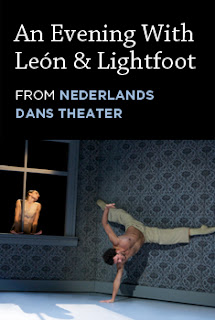January 25 - 31
“Do not stand
idly by while your brother’s blood is being spilled,” is Standing Silent’s message. Gripping and unsettling, the film sheds
light on the victims of sexual abuse in Baltimore’s Orthodox Jewish community and
helps break the cycle of silence.
Washington Jewish Post editor Phil Jacobs recounts
the harrowing experiences of survivors of sexual abuse and fights the
establishment to give their stories a voice.
Strengthened by the author’s personal story
of abuse after 25 years of silence, the film began as a series of articles on
sexual abuse in the Baltimore Jewish Times. Uncovering a web of sexual
abuse against a rabbi and his son in the Baltimore Orthodox Jewish community, Standing
Silent, reveals the hidden truth as it documents the pain and suffering
of the survivors.
Standing Silent director
and Home Alone producer, Scott
Rosenfelt stated, “I saw a narrative character that was in great conflict
between protecting his faith and his community and protecting children and
humanity.” A controversial topic
in the Jewish community, as in other tight-knit communities, the film seeks to uncover
abuse and make it an obligation to protect abuse victims.
Vilified for reporting
allegations of sexual abuse in Baltimore’s Orthodox community, Jacobs fights on
to bring these cases to life despite the charged emotions surrounding the issue
and the backlash from the community. One victim in the film says, “Everyone was telling me it
didn’t happen…no one wants to talk about this stuff.”
January 25 – 31!
Exclusive Q&A with Standing Silent’s Phil Jacobs
Q:How did Standing Silent come about?
A: One of my dearest friends is a man named Bob
Rosenfelt. We share a love of baseball. Every March we try to take three days,
go to South Florida and see as many spring training major league baseball games
that we can. We've been doing this for years. And from the beginning, Bob's
brother Scott has joined us. While I was writing the series of stories on
molestation, I had an interview set up with a molestation survivor in Vero
Beach, Fla. At the time, the Dodgers trained there. So, on the way to the ball
park, Scott and Bob dropped me off at a coffee house to interview a survivor. I
introduced the gentleman to my two friends. Scott saw immediately that this was
a person whose face generated sadness. Even his handshake was tentative. When I
was finished with the interview, the man took me back to the baseball stadium.
I took my seat in between Bob and Scott. During the game, Scott kept asking me
questions about what I was writing. By the 9th inning, he said to me,
"I've never made a documentary before. But if I could raise the funds,
would you let a crew follow you?" I replied that I'd have to check it out
with my wife. And that's how it got started. The crew came to Baltimore many
times and even traveled to Israel when I was there visiting my oldest daughter.
Q: What was something good that came from all
of this?
A: The articles created a conversation within the
Baltimore Jewish community and helped validate the work of a Jewish Baltimore
organization, the Shofar Coalition that works with survivors. The articles
brought the issue out into the open and helped victims come forward and begin a
process of healing.
Q: What brought about the investigation you
did?
A: There was little or no news about molestation in
the Jewish community. In May of 2006, a friend invited me to a meeting he was
putting together. It was for survivors of sexual molestation….I wrote the
article, "Steve is 25." And it was the first story in a series of
many articles. It was Steve's encouragement that made the article possible.
Q: What was the impact on your personal life in
Baltimore?
A: It wasn't very pretty. Some people I considered
friends wouldn't even look me in the eye. They'd stare down at the sidewalk
instead of looking at me. I was shouted at while standing in line at a kosher
grocery store. However, I also learned who my real friends were within the
Jewish community. That is something I will always cherish. My real friends
circled my family with love and encouragement.
Q: What has happened in Baltimore since the
articles were published and Standing Silent was screened?
A: I wouldn't take credit for any of this. However,
the Shofar Coalition now has a speaker's bureau where survivors meet with
adults and youth and share their stories.
It's quite a change in reaction.
Q: Was there a particular difficult moment
during or following the screening of the film?
A: Almost every screening I've attended, someone
will approach me and tell me their most difficult stories. I've learned that
there are so many people who are in deep, deep pain.
Q: Do you feel that this is an issue only
connected to the Orthodox community?
A: Not at all. I have met many, many survivors from
all denominations and also many not affiliated at all with any branch of
Judaism.
Q: What would you do differently if the filming
were to start over?
A: I think I would have offered websites of
agencies people could call for help.
Q: Are you still writing about this subject?
A: Off and on, yes I am. It hasn't stopped. I
receive phone calls and emails regularly as a result of Standing Silent. The
film changed the lives of many for the good.





